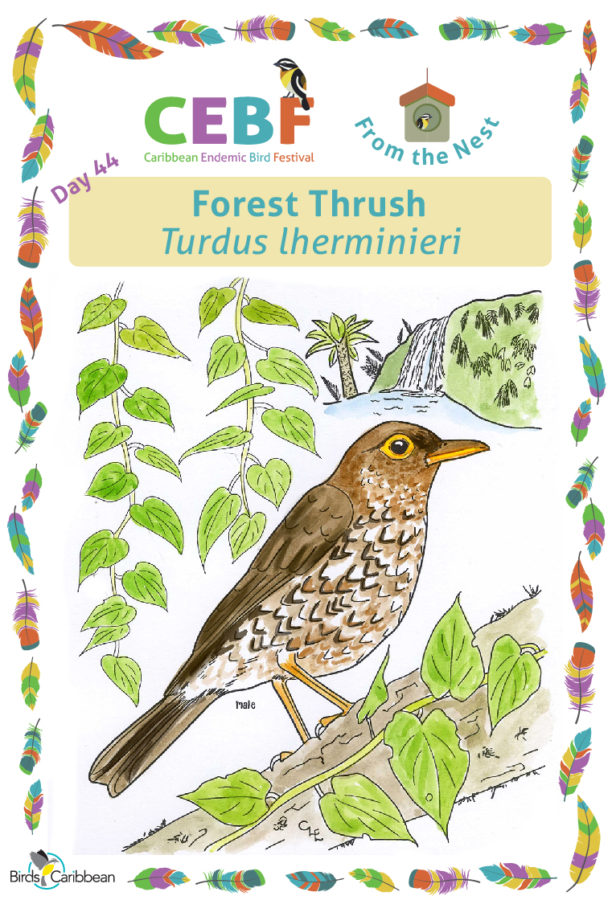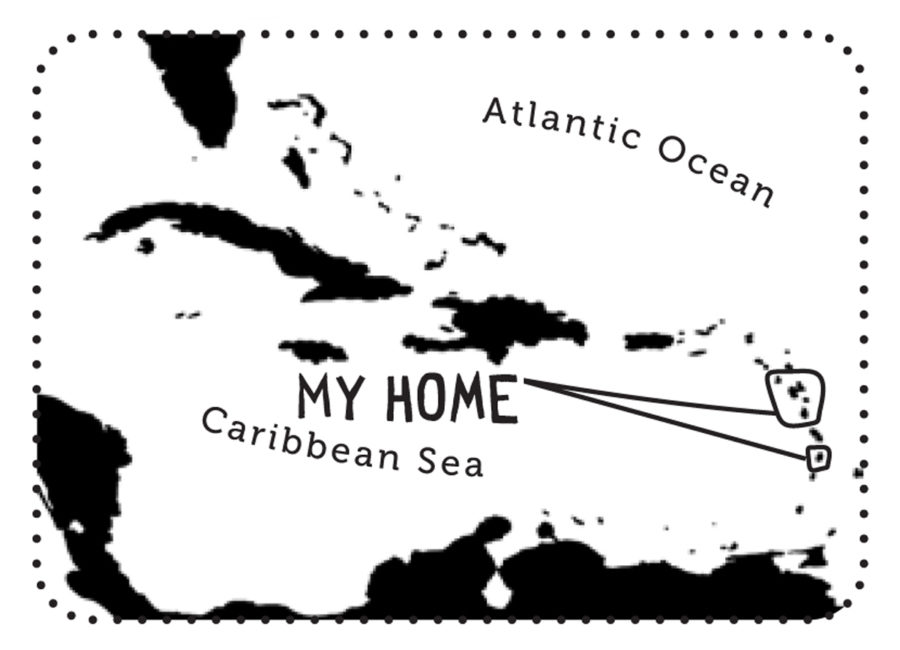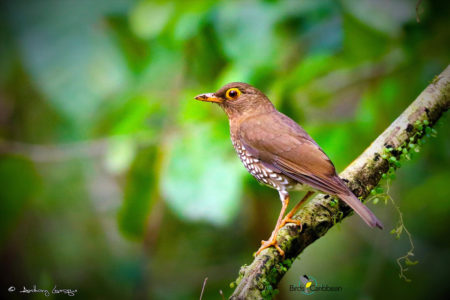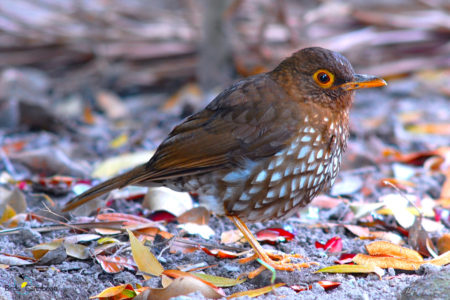Celebrate the Caribbean Endemic Bird Festival (CEBF) with us in our virtual “From the Nest” edition! Have fun learning about a new endemic bird every day. We have colouring pages, puzzles, activities, and more. Download for free and enjoy nature with your family at home.

Endemic Bird of the Day: Forest Thrush
 The Forest Thrush is a shy forest dweller endemic to the Lesser Antilles, where it occurs only on four islands: Montserrat, Guadeloupe, Dominica and Saint Lucia. It is locally called the Yellow-legged Thrush – it’s name in French, Grive à Pattes Jaunes, means just that. The legs, bill, and bare skin around the eye of this bird are bright yellow. Its upperparts are brown while its underparts have white feathers edged in brown, giving it a scaled effect. Males and females have the same plumage.
The Forest Thrush is a shy forest dweller endemic to the Lesser Antilles, where it occurs only on four islands: Montserrat, Guadeloupe, Dominica and Saint Lucia. It is locally called the Yellow-legged Thrush – it’s name in French, Grive à Pattes Jaunes, means just that. The legs, bill, and bare skin around the eye of this bird are bright yellow. Its upperparts are brown while its underparts have white feathers edged in brown, giving it a scaled effect. Males and females have the same plumage.
The preferred habitat of the Forest Thrush is mountain forests, but it also occurs in swamp forests in Guadeloupe. Like other thrushes, it sings a soft musical song, but it mainly sings at night. This forces ornithologists to get up very early to go and count them! In Guadeloupe, the French Biodiversity Office has been monitoring the species for 6 years. The results of the 2020 census are very encouraging with record numbers of birds in some areas. This is good news because the population had suffered a decline from Hurricane Maria in 2017. Moreover, thanks to a successful campaign, including a petition to the French government and letter-writing campaign by BirdsCaribbean, the species will not be hunted in 2020 in Guadeloupe!
The Forest Thrush was previously classified as Vulnerable by the IUCN. Its population had declined throughout its range from deforestation, introduced predators, hunting, and severe habitat loss from the Soufrière Hills volcanic eruptions on Montserrat in 1995-1997. Surveys show it has been gradually increasing in remaining habitat in Montserrat and numbers are up in Guadeloupe as well. This led to a downgrading from Vulnerable to Near Threatened in 2019. Unfortunately, however, the Forest Thrush has declined drastically in St. Lucia and it is now extremely rare, if not extirpated. Ornithologists do not know why.
Each of the four islands where the Forest Thrush lives host a different subspecies, which all look a little different. The thrush feeds on insects and berries from ground level up into the tree canopy. Breeding takes place from April to July. A bulky cup-shaped nest is built, usually not far from the ground, in a bush or tree. Two to three greenish-blue eggs are laid. Learn more about this species, including its range, photos, and calls here.
Colour in the Forest Thrush!
Download the page from Endemic Birds of the West Indies Colouring Book. Use the drawing above or photo below as your guide, or you can look up pictures of the bird online or in a bird field guide if you have one. Share your coloured-in page with us by posting it online and tagging us @BirdsCaribbean #CEBFfromthenest
Listen to the song of the Forest Thrush
The Forest Thrush‘s song is a musical pattern of clear notes, fairly loud and far-reaching. Calls include sharp chuk or chuk-chuk.
Puzzle of the Day
Click on the image below to do the puzzle. You can make the puzzle as easy or as hard as you like – for example, 6, 8, or 12 pieces for young children, all the way up to 1,024 pieces for those that are up for a challenge!


Activity of the Day
FOR KIDS & ADULTS: Enjoy this short video of a Forest Thrush in Guadeloupe hopping along the ground and tossing aside leaf litter as it forages for insects and berries to eat.
